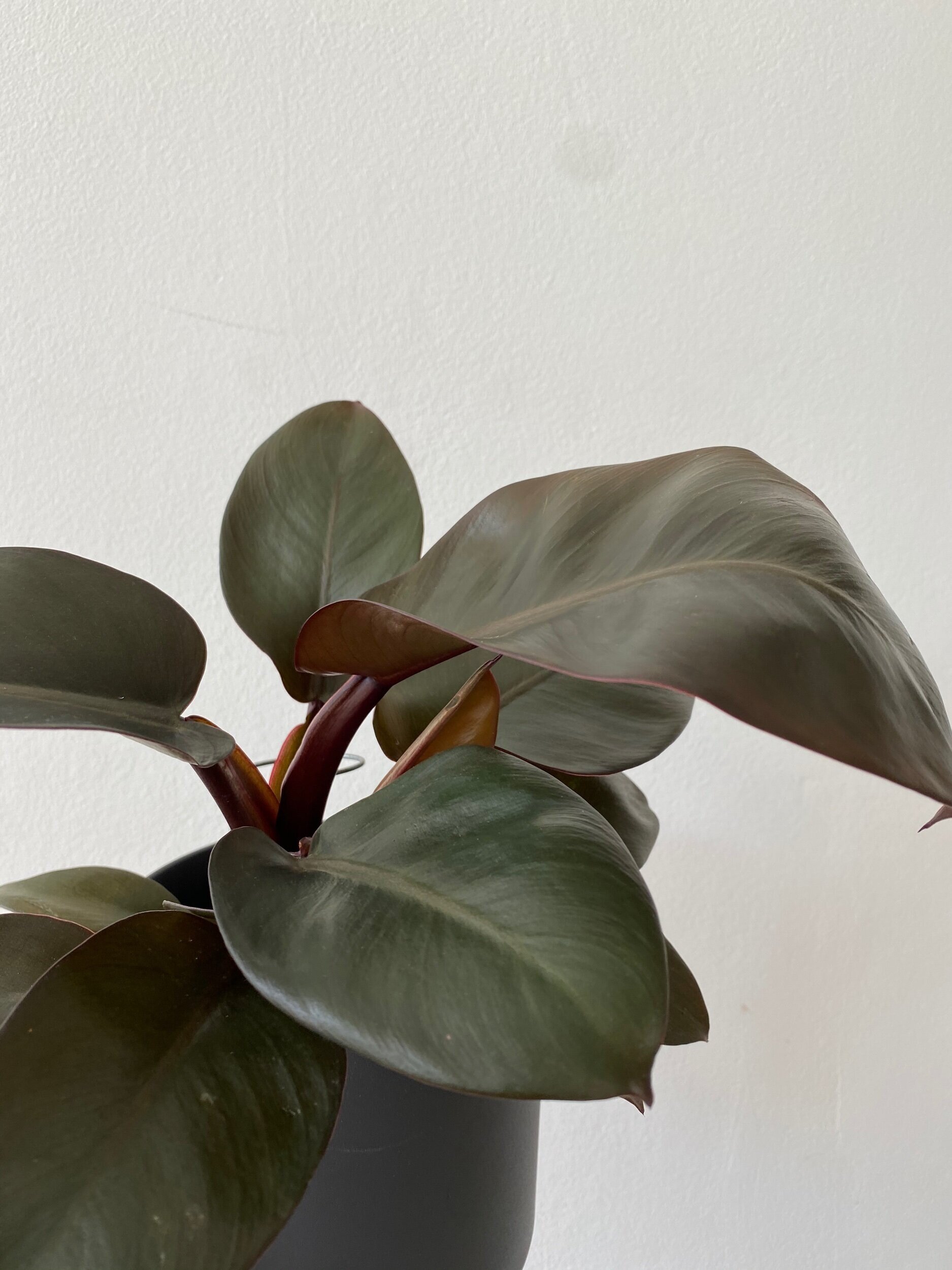Philodendron
It is well understood that Philodendron is among the most loved houseplants these days. From Scandens to Micans, to variegated and also often mistaken as a Monstera, a Philo is every houseplant lovers must-have plant, well at least one variety. Philodendron are a genus of climbing araceous shrubs native to tropical America. The name can be translated to “loving trees” and in many countries Philodendron is known as “tree climber”, as it grows to cover the base of trees vining around the trunks.
Their most well known characteristic features are their heart shaped leaves, aerial roots and leaves with various style “gashes” and shapes. Philodendrons are often confused with pothos and monstera and while their leaves are similar in shape, the stems of pothos are grooved where as a new philodendron leaf has a sheath which falls off as the leaf unfurls. Some Philodendron leaves also change their shape as the plant matures.
Care
With elegant trailing habits, these plants can be trained to trail around moss poles, along a wall or simply hang down from shelves. These plants do need bright, indirect light to keep their variegation strong. As a general rule with these plants, the darker the leaf, the less light it desires. It also helps photosynthesis if you regularly wipe the leaves. Sunlight, water and fertilizer are the things we need to keep in consideration.
Humidity is important to these plants. Keep them in normal room temperatures, but once the weather starts getting colder we recommend you move them to slightly warmer sections of your home. The cold can shock the plant and create staggered growth and smaller leaves. Water will not be absorbed enough and cause the leaves to rot. Draughts can increase the chances of pests infesting the plant so it is recommended you try to prevent this as much as possible.
Despite popular belief, the soil in these plants should never really dry out completely. Where they are hardy plants and bounce back quickly, regular watering will produce a much healthier and sturdier plant. Keep your plant slightly moist and water only once top two inches of the soil is dry. Avoid waterlogged soil and the best way to do this is water deeply, let water run out from the drainage holes and when it stops dripping completely you place your plant back in the decorative pot. Over winter, let the soil dry out slightly more and water little at a time.
The best time to repot and rejuvenate the soil is during Spring and when they have outgrown their pot. Any damage caused to the roots or plants can easily recover over the warmer months. This is also the best time to feed your plant. You’ll be pleased to see how quickly they wake up from the dormancy period. Philodendrons also need micronutrients and they receive these from liquid fertilizer. Mix out with watering once a week over the growing period.
Problems
Brown tips - Low humidity or irregular watering. Don’t let the soil dry out to a crisp.
Browning/yellowing leaves - Too much water, make sure the pot is not waterlogged.
Spindly growth and small leaves - not enough light or lack of minerals. Move closer to a window avoiding the sun, and make sure you use liquid fertilizer once a week over summer
Brown spots with yellow halo - Bacterial leaf spot. Cut away the infected leaf and avoid getting leaves wet when watering.






